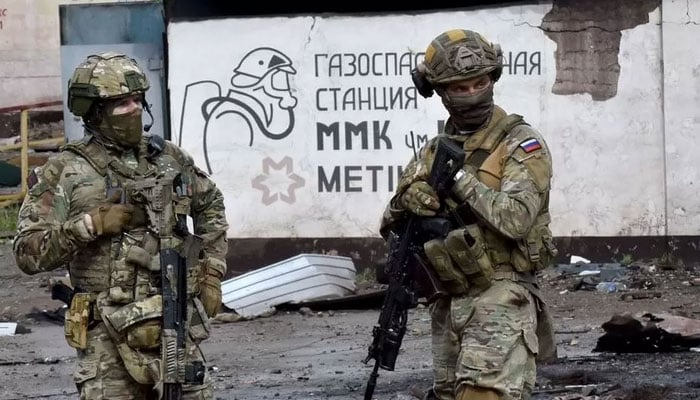
By Nayyar Adnan
The 2002 Gujarat riots, also known as the 2002 Gujarat violence and the Gujarat pogrom, was a three-day period of inter-communal violence in the western Indian state of Gujarat. The burning of a train in Godhra on 27 February 2002, which caused the deaths of 58 Hindu pilgrims karsevaks returning from Ayodhya, is cited as having instigated the violence. Following the initial riot incidents, there were further outbreaks of violence in Ahmedabad for three months; statewide, there were further outbreaks of violence against the minority Muslim population of Gujarat for the next one year.
At 7:42 A.M. on February 27, 2002, Sabarmati Express pulled into the train station of Godhra, a small town in the Western Indian state of Gujarat, ruled by a Hindu nationalist government since 1995. Sabarmati Express was carrying cadres (karsevaks) of the Hindu right from Ayodhya, where they had gone to express their vigorous support for building a Ram temple at a legally and politically disputed site. At Godhra, apparently, an altercation took place between Hindu activists and some Muslim boys serving tea at the train station. As the train began moving after its scheduled stop at the station, the emergency cord was pulled. As a result, the train stopped in a primarily Muslim neighborhood where it is falsly claimed that it was attacked by a Muslim mob. Two carriages were burned and the firefighting efforts hampered. The fire killed 58 passengers, including many women and children.
In response to these false claims, Hindu mobs torched Muslim homes and businesses, killed Muslim men, women and children, and erased mosques and graves. Instead of isolating those alleged criminals who attacked the train and punishing them legally, as any law-bound and civilized government would do, Modi’s state government allowed revenge killings.
According to official figures, the riots ended with 1,044 dead, 223 missing, and 2,500 injured. Of the dead, 790 were Muslim and 254 Hindu. The Concerned Citizens Tribunal Report, estimated that as many as 1,926 may have been killed. Other sources estimated death tolls in excess of 2,000. Many brutal killings and rapes were reported on as well as widespread looting and destruction of property. Over 100,000 Muslims were pushed into the state’s ramshackle refugee camps, where basic amenities were minimal and living conditions abysmal. Narendra Modi, then Chief Minister of Gujarat and later Prime Minister of India, was accused of condoning the violence, as were police and government officials who allegedly directed the rioters and gave lists of Muslim-owned properties to them.
Hindu groups alleged that the fire was started by Muslim protesters, but an inquiry diverged that blaze was an accident. Blaming Muslims for the blaze, extremist Hindu mobs stormed through Muslim neighbourhood in several cities seeking reprisals during three days of bloodshed. Sanjiv Bhatt, Intelligence Bureau officer Gujarat, in 2002 also alleged that, in a meeting in the night before the riots, Mr Modi told officials that Muslim community needed to be taught a lesson following an attack on a train carrying Hindu pilgrims. However, the bloody riots tarred Modi’s international image, leading him to be blacklisted for a decade by the United States and the European Union.
Official probe absolved the state Police and government of any collusion in the violence, which left 200,000 people homeless. However, there are confirm reports of police and state apparatus backing Hindu extremists and feeding them with information and other materials to persecute Muslims. Many Muslims never returned home, more than 100 people have been convicted over the riots in a series of trials over the past 14 years. An Indian court in 2011 found 31 Hindus guilty of murdering 33 Muslims who were seeking shelter in a single house. In 2012, a former minister in Modi’s state government was handed a life sentence for her role.
Hindu-Muslim riots are not uncommon in India, but Gujarat violence plumbed new depths of horror and brutality and has come to acquire a double meaning. It was a bruising embarrassment for anyone who believes in the pluralistic core of Indian nationhood, a view enshrined in India’s constitution, a view that gives an equal place to all religions in the country, privileging none.
Gujjrat riots happened when Modi was the CM of that state. Now under his premiership whole world is noticing his anti-Muslims policies. Delhi riots is also an example of how RSS is spreading extremism in the country. Last but not least is the way Modi government is polluting the minds of youth in India. Current Hijab row is the glaring example how young pupils are blindly following saffronization in India. BJP is involved in procuring/ distributing saffron shawls & headgear worn by students during protests to oppose use of hijab. State Congress Chief D K Shivakumar asserted that Hindu students raised Hindutva flag at a Shivamogga college on a pole meant to hoist national flag & state flag on special occasions. Educational institutions becoming fertile ground for anti-secularism and anti-caste / religion activities. Muslim students though less in numbers continue to feel Indian machinations. It is the Muslim youth in Indian universities who are the custodians of Islamic values of Indian Muslims. Aggression against Muslim youth will leave them with no choice but to resort towards kinetic means to overpower the clutches of oppression.


